Running Doubles
Topic 31237 | Page 2
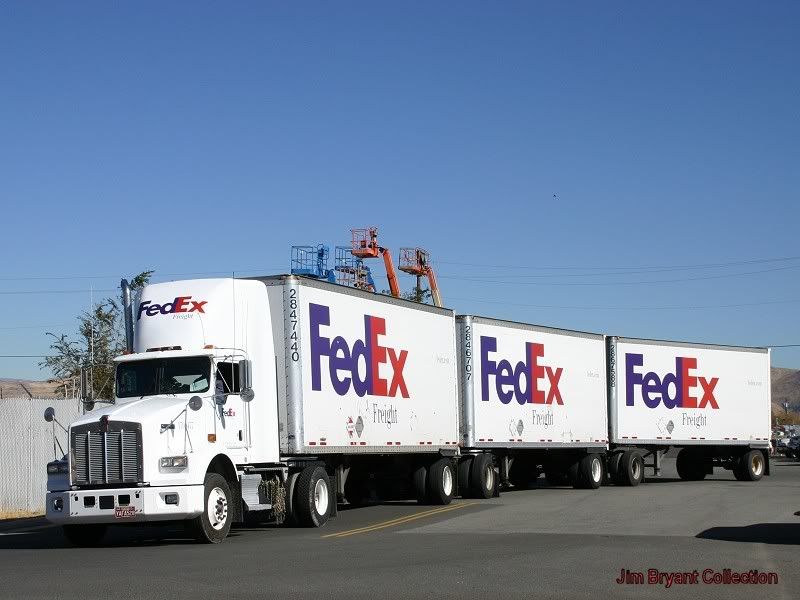
Question for Banks and Auggie; do you do your own setups? Or does the spotter/yard jockey do them?
As Banks said we do our own. Although, I once had to drive straight through to the destination center because their driver could not get to the meet point due to a breakdown. When I got there, they felt so bad (it was a small center) they basically had me just drop my set in the yard and head to the hotel.
When I got to the center the next morning my new set was already assembled and ready to go! Nice folks.
As far as the pic, I'm sure folks would whine pulling into the pumps at Pilot ;)
Here is someone at Central doing it on their last day.

We have to do our own as well we aren't afraid to break a nail unlike those ABF and YRC drivers. 
I've called the terminal before if I was running late and asked them to have a spotter or another driver do it.
Terminal:
A facility where trucking companies operate out of, or their "home base" if you will. A lot of major companies have multiple terminals around the country which usually consist of the main office building, a drop lot for trailers, and sometimes a repair shop and wash facilities.
HOS:
Hours Of Service
HOS refers to the logbook hours of service regulations.I like doing it because I’ll take the pay to do it lol
We have to do our own as well we aren't afraid to break a nail unlike those ABF and YRC drivers.
I've called the terminal before if I was running late and asked them to have a spotter or another driver do it.
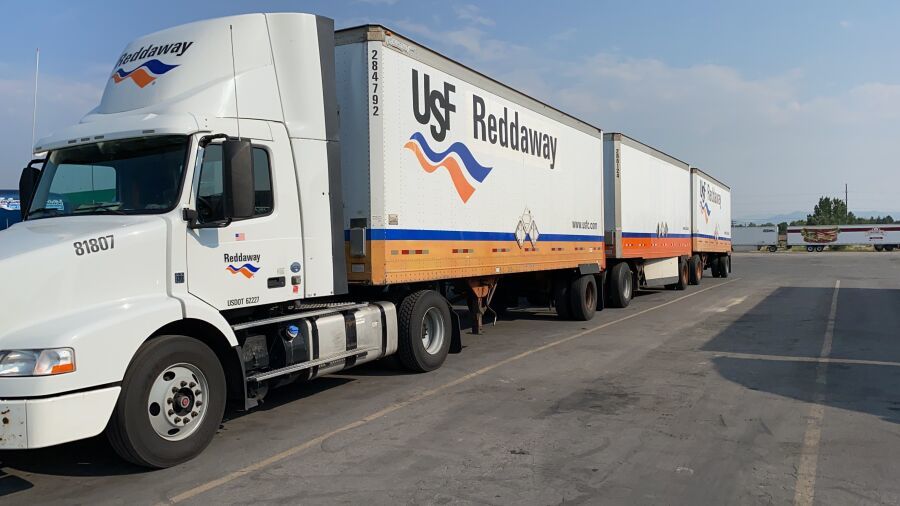
Terminal:
A facility where trucking companies operate out of, or their "home base" if you will. A lot of major companies have multiple terminals around the country which usually consist of the main office building, a drop lot for trailers, and sometimes a repair shop and wash facilities.
HOS:
Hours Of Service
HOS refers to the logbook hours of service regulations.We still get paid to do it, even if we don't do it.

Here is a the rear connections of a pup trailer used in doubles/triples service.
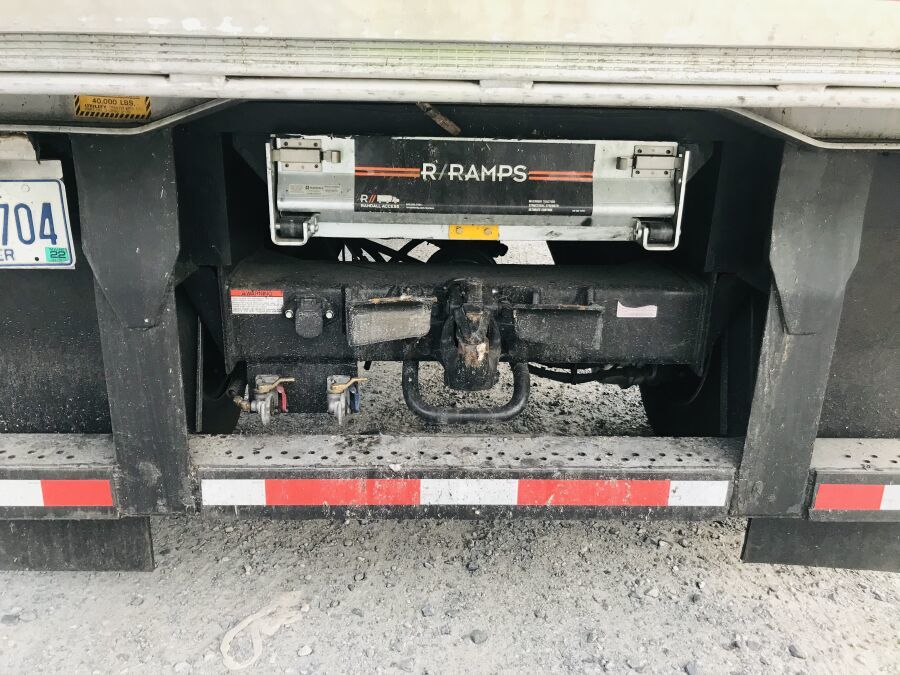
From left to right; emergency/parking brake gladhand and valve handle, 9-pin electrical socket and locking cover, service brake gladhand and valve handle, pintle hook and safety chains hook beneath the pintle hook. Bump stops on either side of pintle hook. Brass colored valves are “off”. Although the pic is a bit fuzzy, the pintle hook is closed.
Sans the unloading ramp, upper middle of photo, this represents the usual trailer hardware necessary for connecting a converter dolly to a lead trailer. There are variations even in our fleet. Older trailers have the emergency gladhand on left and service on the right. Obviously both on the left, IMO make it easier to connect the airlines. Some of the safety chains hooks are half circles, less beefy than the one shown here.
This trailer was manufactured by Utility and was placed into service during the summer. Thus; all of this hardware functions without any issues. More on that later.
Doubles:
Refers to pulling two trailers at the same time, otherwise known as "pups" or "pup trailers" because they're only about 28 feet long. However there are some states that allow doubles that are each 48 feet in length.
Here is a the rear connections of a pup trailer used in doubles/triples service.
From left to right; emergency/parking brake gladhand and valve handle, 9-pin electrical socket and locking cover, service brake gladhand and valve handle, pintle hook and safety chains hook beneath the pintle hook. Bump stops on either side of pintle hook. Brass colored valves are “off”. Although the pic is a bit fuzzy, the pintle hook is closed.
Sans the unloading ramp, upper middle of photo, this represents the usual trailer hardware necessary for connecting a converter dolly to a lead trailer. There are variations even in our fleet. Older trailers have the emergency gladhand on left and service on the right. Obviously both on the left, IMO make it easier to connect the airlines. Some of the safety chains hooks are half circles, less beefy than the one shown here.
This trailer was manufactured by Utility and was placed into service during the summer. Thus; all of this hardware functions without any issues. More on that later.
TYSM!
Yes! ... I might grasp this concept after all. . . (after the 'more later' ... !)
~ Anne ~
ps: Can you illustrate the 'what hooks where?' ... not the Gladhands; got that part. The 9 pin is in lieu of the Green line, then?
Doubles:
Refers to pulling two trailers at the same time, otherwise known as "pups" or "pup trailers" because they're only about 28 feet long. However there are some states that allow doubles that are each 48 feet in length.

Yes. Fighting daylight...or lack there-of.
Here is a the rear connections of a pup trailer used in doubles/triples service.
From left to right; emergency/parking brake gladhand and valve handle, 9-pin electrical socket and locking cover, service brake gladhand and valve handle, pintle hook and safety chains hook beneath the pintle hook. Bump stops on either side of pintle hook. Brass colored valves are “off”. Although the pic is a bit fuzzy, the pintle hook is closed.
Sans the unloading ramp, upper middle of photo, this represents the usual trailer hardware necessary for connecting a converter dolly to a lead trailer. There are variations even in our fleet. Older trailers have the emergency gladhand on left and service on the right. Obviously both on the left, IMO make it easier to connect the airlines. Some of the safety chains hooks are half circles, less beefy than the one shown here.
This trailer was manufactured by Utility and was placed into service during the summer. Thus; all of this hardware functions without any issues. More on that later.
TYSM!
Yes! ... I might grasp this concept after all. . . (after the 'more later' ... !)
~ Anne ~
ps: Can you illustrate the 'what hooks where?' ... not the Gladhands; got that part. The 9 pin is in lieu of the Green line, then?
Doubles:
Refers to pulling two trailers at the same time, otherwise known as "pups" or "pup trailers" because they're only about 28 feet long. However there are some states that allow doubles that are each 48 feet in length.
I'll be patient, G !!!
I'm just blessed with the opportunity to learn this; as will MANY members (and futures!) of the Trucking Truth community.
Thank you so much, good sir! (And to ALL Y'ALL doubles/triples guys!!) The one year of Tom's driving life, I missed. TYSM!
~ Anne ~
Doubles:
Refers to pulling two trailers at the same time, otherwise known as "pups" or "pup trailers" because they're only about 28 feet long. However there are some states that allow doubles that are each 48 feet in length.

Last nights soup required that I run the dolly bareback behind an empty (only one 28’ pup) to the DC and pick up two loaded pups to be run as doubles. This imbalance happens occasionally...
The pictures are not great... I go on duty at 4:30pm, sunset is 4:40ish... I loose daylight quickly.
Here’s the rear of the trailer I connected with, notice the placement of the gladhands and valves on this one (mfgd. by Great Dane) as compared to the Utility built trailer. Safety chain hanger is also a different design. Pintle hook is in the open position.
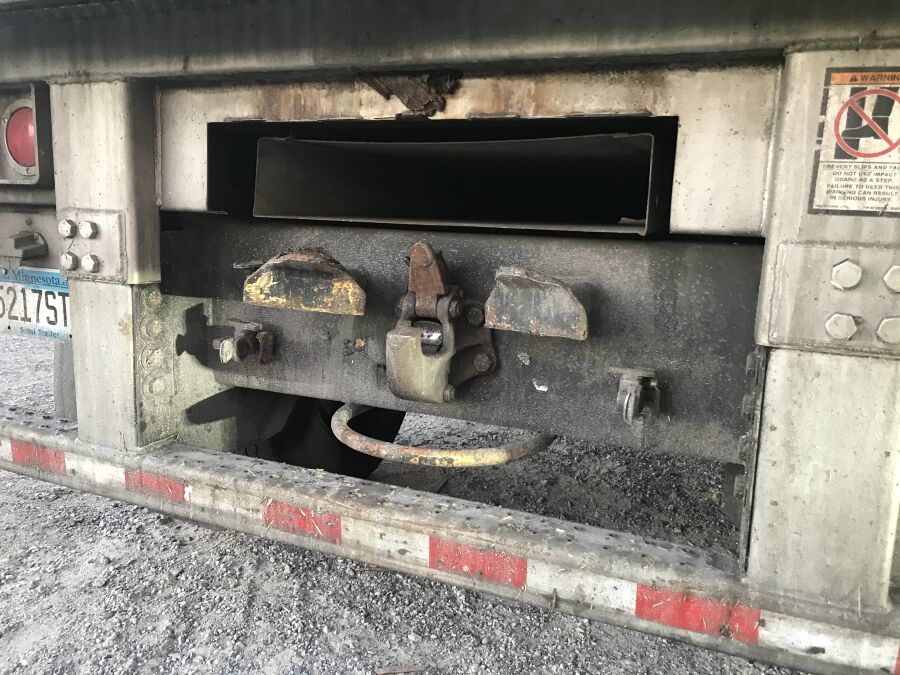
The chassis is parked on the far end of the yard allowing ample space to drop it when done and pick-it when setting up. It’s 11’ long and equipped with auto-inflate for low tire pressure (look at the hubs) and ABS brakes. The extra length compensates for the trailer axle placement set about a foot forward to allow clearance of the rail gate. A heavy counterweight serves as the bumper. The manual fifth wheel kingpin release functions in a similar fashion as truck tractors. I perform a thorough pre and post trip on the dolly before and after each turn (run).
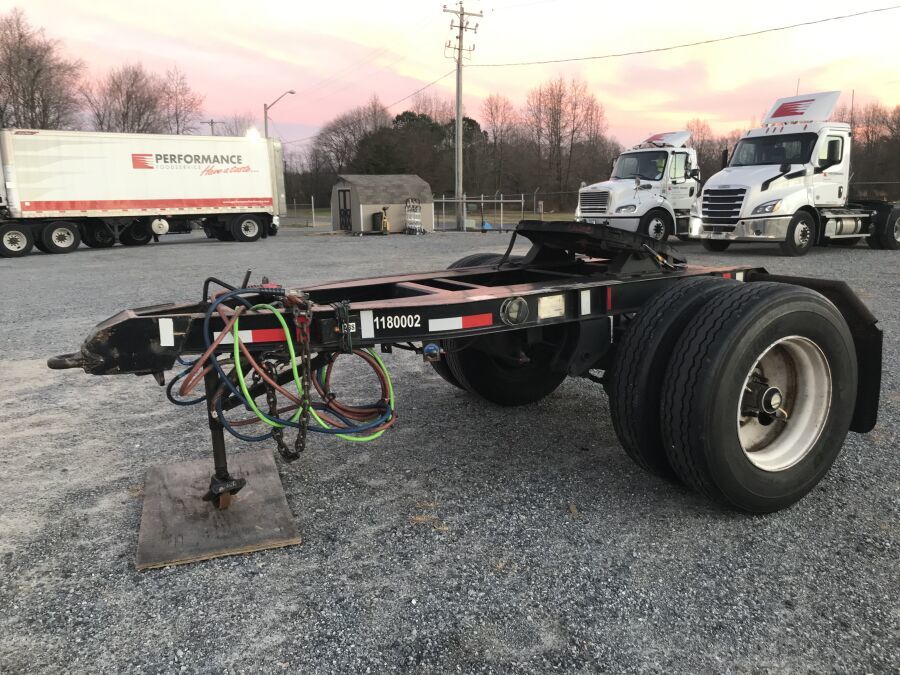
Business end of the dolly. Eye hook (tongue) drops onto the lower half of the pintle hook.
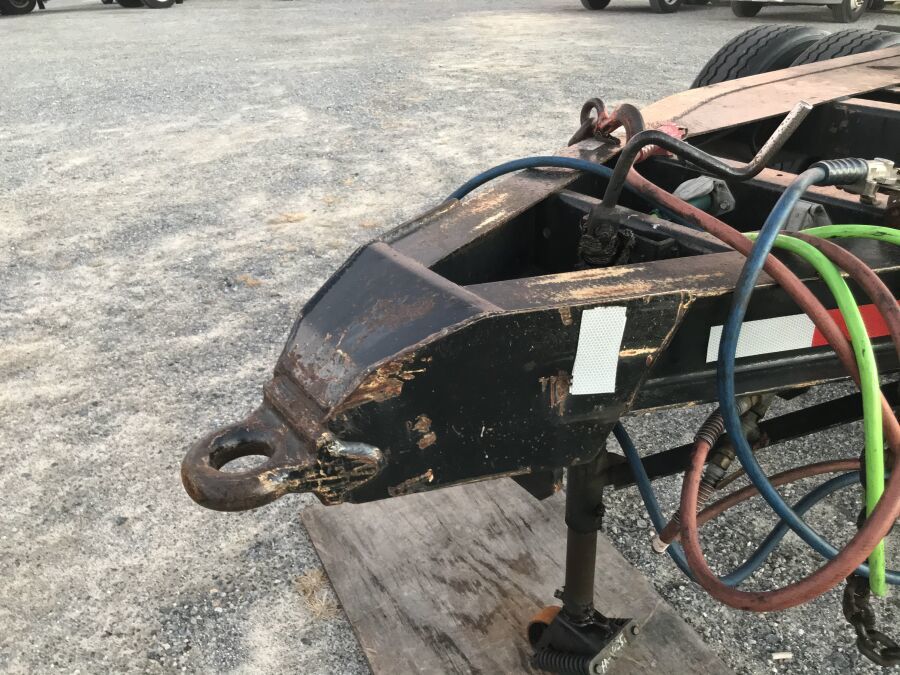
Here is how it looks in the driver’s side mirror as the trailer is backed towards the dolly. I align each side of the trailer with the outside edge of each dolly tire. Keeping everything in a straight line is preferred. Although the dolly can be moved, the goal is to minimize that. When it’s dark I use a flashlight on the ground to mark where the tongue of the dolly is. I’ll get as close a possibly, GOAL, adjust the tongue height by either raising or lowering the landing gear. I’ll pace the distance remaining to align the tongue centered on the pintle hook, using a flashlight placed on the ground next to the cab step.
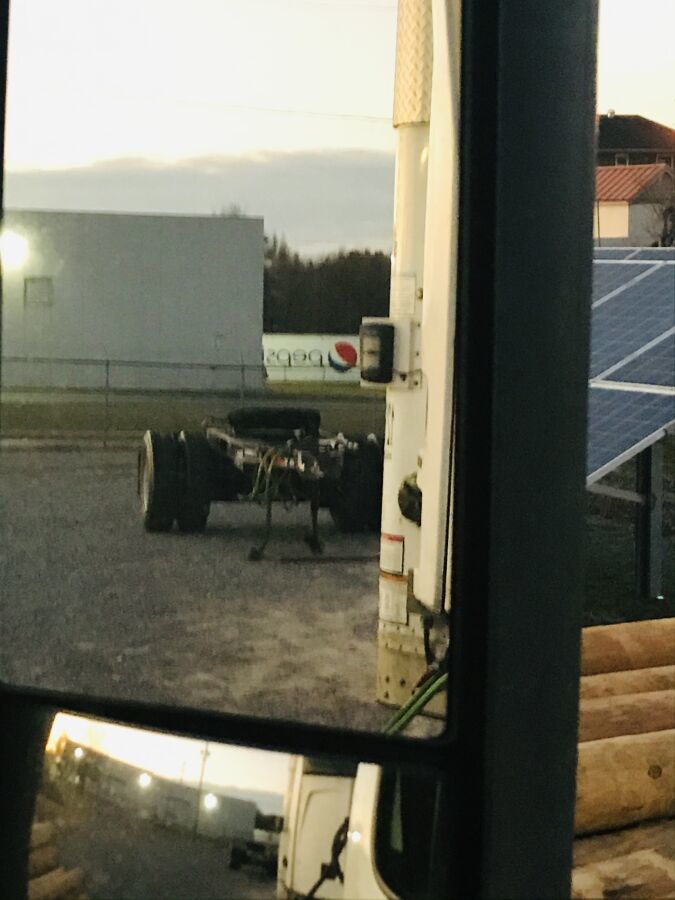
The flashlight in the ground marking the distance remaining to enable centering of the tongue over the lower part of the pintle hook.
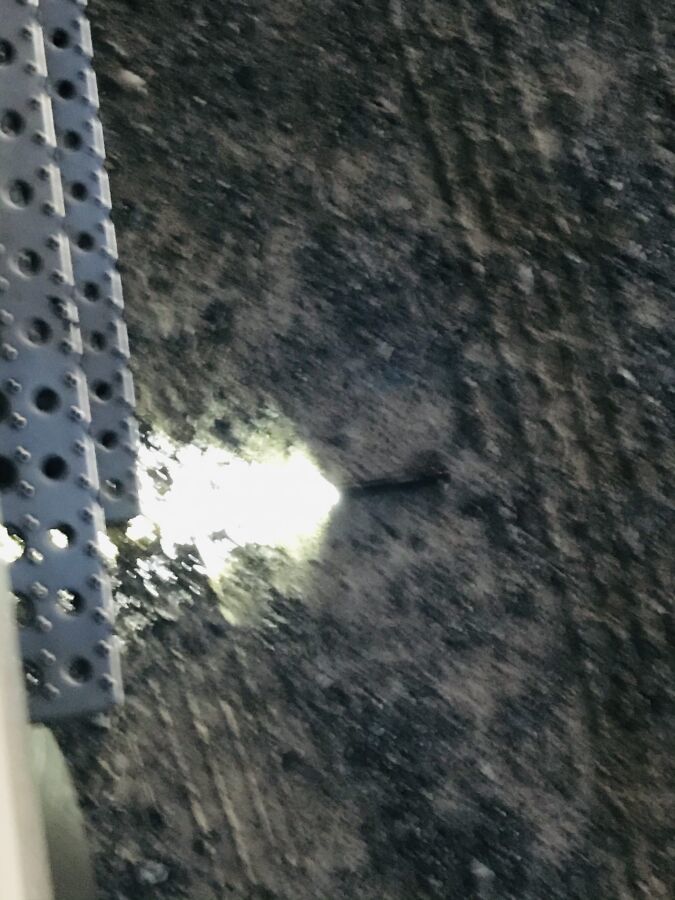
Pintle hook and tongue alignment. Gear lowered so the tongue now rests on the pintle hook.
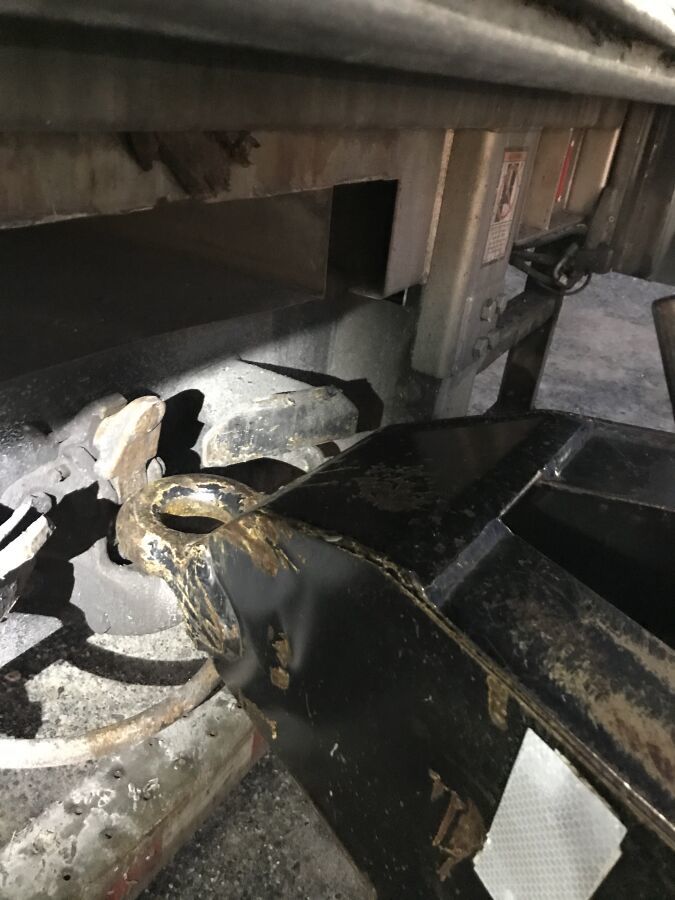
Often times the pintle hook needs to coaxed into the locking position by tapping on the locking jaw with a hammer. There is a spring loaded steel clamp that locks the jaw in place.
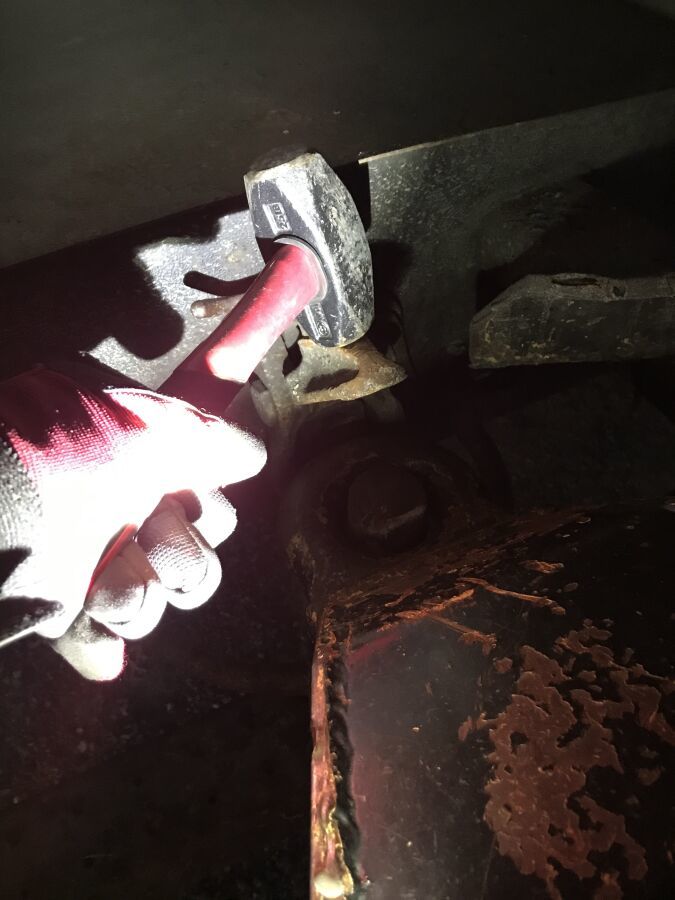
Locked and in place. I perform a safety check here by lowering the gear, applying upward force to ensure the pintle hook is locked and will not release under pressure.
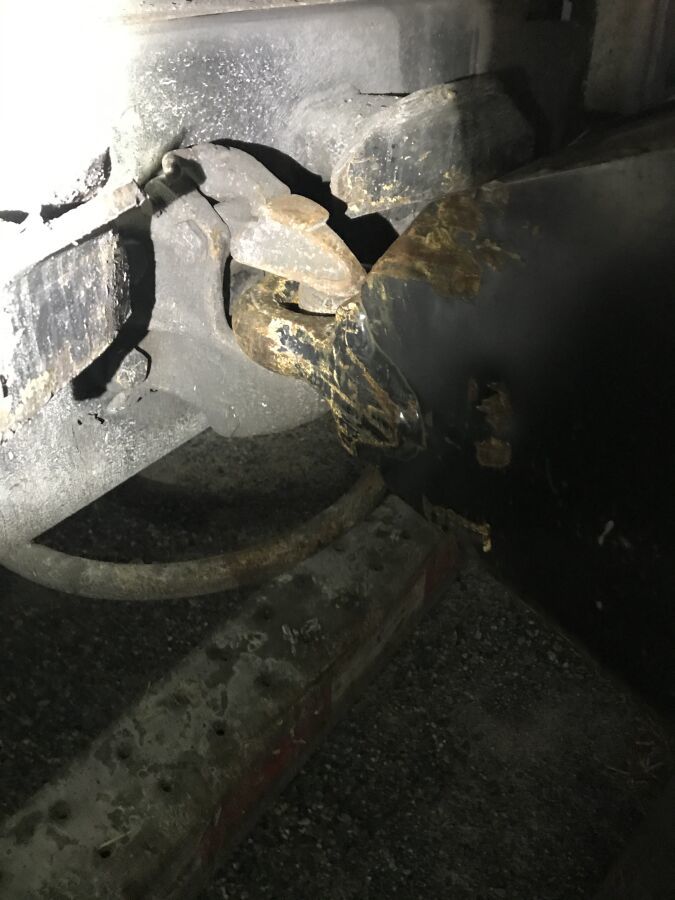
Ready for the next steps... continued.
Doubles:
Refers to pulling two trailers at the same time, otherwise known as "pups" or "pup trailers" because they're only about 28 feet long. However there are some states that allow doubles that are each 48 feet in length.
OWI:
Operating While Intoxicated
OOS:
When a violation by either a driver or company is confirmed, an out-of-service order removes either the driver or the vehicle from the roadway until the violation is corrected.
New Reply:
New! Check out our help videos for a better understanding of our forum features

















Preview:
This topic has the following tags:
Changing Careers Choosing A Trucking Company Doubles and Triples Linehaul LTL Driving Photos Trailers Truck Equipment







 TT On Facebook
TT On Facebook
I setup my own as well. I It’s work but I like it and probably would not trust anyone else but a brother doubles driver to do it safely.
I d agree, once you get accustom to the middle pivot I can get these into and out of spaces a 53’ box would not be able to navigate without running up on curbs or worse rearranging the shrubbery.
Doubles:
Refers to pulling two trailers at the same time, otherwise known as "pups" or "pup trailers" because they're only about 28 feet long. However there are some states that allow doubles that are each 48 feet in length.